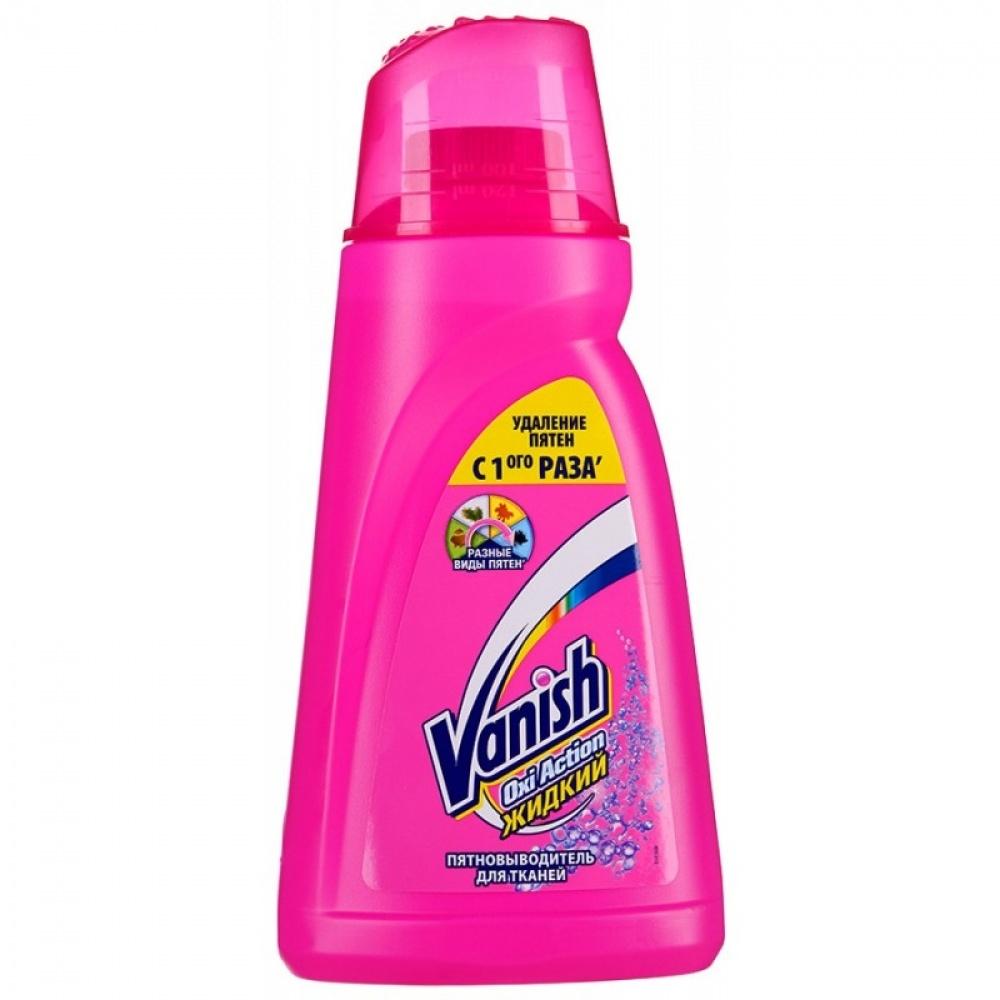How to remove rust from white clothes
In the process of wearing, stains of various origins inevitably appear on clothes. Some are easy to clean, but getting rid of others takes a lot of effort. Rust stains fall into the latter category. How to remove rust from clothes?

How "rusty" spots appear
It turns out that there are many options for the appearance of unpleasant red spots on clothes. And each of them is the result of carelessness or carelessness of the owner of the thing.

Let's list the most common ones:
- In the process of drying washed clothes on rusty radiators or other heating devices. According to statistics, this is the most common way of appearance of characteristic reddish-brown spots.
- Washing clothes with metal objects. Of course, hardly anyone will specially put coins, hairpins or jewelry in their pockets before washing, but everyone can forget to inspect things before washing. In addition, cheap things may have low-quality metal fittings, which rusts at the slightest contact with water, which means that after washing, metal buttons, rivets or buttons can leave their mark on your favorite thing.
- Stains often appear on children's clothes after riding on rusty swings or slides. Unfortunately, not all playgrounds are restored on time, and children have enough time to additionally “paint” their clothes.

Rusty stains appear more quickly on light-colored clothing. If you do not take action in time, the situation will worsen, and you may have to part with your favorite thing forever.

Rust marks from synthetic and natural fabrics, from colored and white clothes, from dense or delicate fabrics are removed in different ways. Therefore, before you start cleaning things, carefully read the instructions for using the product, or rather, try the composition on an inconspicuous area in order to guarantee that you will save yourself from unpleasant surprises later.

How to remove rust
Immediately, we note that both prevention is more effective than the disease itself, and careful attention to things is much more effective in the fight against stains than any stain remover or folk remedy. Well, if it so happened that rust "adorned" your favorite jeans, then the sooner you start to eliminate it, the more success you are guaranteed.

Clothes made from natural fabrics: silk, cotton, wool
If reddish-brown stains appear on things made of cotton, silk or wool, you can use a mixture of oxalic acid and soda, tartaric acid and salt, or a tandem of hydrochloric acid and ammonia for cleaning.

How it works:
- Oxalic acid and soda. Dissolve one teaspoon of acid in 200 ml of water. Warm the mixture a little and apply to the stained area. Leave it on for 15-20 minutes. After that, sprinkle some baking soda on top of the dirt, wait 5 minutes and wash the item as usual.
- Tartaric acid and salt. Take one part acid and salt and two parts water. Mix everything thoroughly and apply to the stained spot. Leave until the mixture is completely dry. After that, wash the thing as usual.
- Oxalic acid and vinegar. Take equal parts acid and vinegar and mix in 200 ml of water. Heat the solution to 60 degrees and apply to the stained area. Leave it on for 3-4 hours. Then prepare a rinse solution: 3 tablespoons of ammonia per 1 liter of water. Rinse the item in the prepared composition.
- Hydrochloric acid and ammonia. Attention: you need 2% hydrochloric acid! First, the dirty place is treated with acid until the “rusty” spot disappears completely. After that, the thing is rinsed in a solution of water and ammonia at the rate of three tablespoons of alcohol per one liter of water.
- Sodium hydrogen sulfite. We prepare a cleaning mixture: 1 teaspoon of hydrogen sulfite in 200 ml of water. The mixture is heated to 60 degrees, the stained place is treated with it, and left for 15-20 minutes. Then the item is rinsed and washed in the usual way.

Important:
- The fresher the stain, the more likely it is to get rid of it completely.
- The higher the acid concentration, the more effective the mixture is, but the risk of corroding tissue fibers increases.
- A mixture of oxalic acid and vinegar is only suitable for thick fabrics (durable woolen, cotton).

Artificial and synthetic fabrics
Immediately, we note that synthetic fabrics are very afraid of aggressive agents. So, acid can simply "eat away" tulle or chiffon. Before removing stains, be sure to try the product on an inconspicuous area.

For synthetic fabrics, a slightly different "menu" is relevant: a mixture of glycerin and chalk, table vinegar and ammonia, as well as lemon.

Recommendations for use:
- Glycerin and chalk. Take crushed chalk and glycerin in equal parts and mix with water until the consistency of thick sour cream. Apply the mixture liberally to the contaminated area and leave for about 12 hours until it dries completely. After that, the item is washed using a detergent (regular or liquid powder).
- Glycerin and dishwashing detergent. Take equal amounts of glycerin and dishwashing liquid and mix. You should get a mass that resembles sour cream in consistency. Apply the composition to the soiled area and leave to dry completely. After that, the thing is erased in its usual mode.
- Toothpaste. Perhaps this is the easiest way that does not require numerous actions from you. The paste is applied to the contaminated area and lightly rubbed off the rust. Leave to dry completely. After that, the thing is washed in the usual way.
- Vinegar and ammonia. The substances are mixed in equal proportions. The mixture is applied to the contaminated area and left for 30 minutes. After that, the thing is rinsed in clean water.
- Lemon juice is another simple and highly effective treatment for rust stains. Squeeze the juice from the lemon and moisten the stained place abundantly. Leave for 15-20 minutes and then wash the thing in the desired mode.
A few simple guidelines for the above stain removal methods:
- If you are using chalk, it should be white. Colored will stain clothes.
- If you use toothpaste when cleaning colored clothes, then it should be without whitening effect. And it is better if there are no colored crystals in it.
- The effectiveness of lemon juice increases significantly when heated. Well, if you clean a fabric that is afraid of heat with lemon juice, then after applying lemon juice to the stain, even at room temperature, just cover this area with a napkin and warm it up with a hairdryer for 2-3 minutes.

Stain removers
If folk remedies were powerless in the fight against unpleasant reddish-brown stains on clothes, you will have to use industrial stain removers. Of course, every housewife has her own favorites, so choose based on personal preferences or recommendations of loved ones.
- Vanish OXI Action. Perhaps this is the most advertised stain remover, although many housewives do not speak very flatteringly about its action. It works well as an additional amplifier for washing powder, and if we talk about the narrow specialization of removing difficult stains, then the tool often turns out to be powerless. It removes only fresh spots, and even then not always with a 100% result. In addition, Vanish requires a very thorough rinsing.

The disadvantages also include high cost, pungent chemical odor and quick consumption. - BOS bleach plus. A budgetary and fairly effective tool. It acts as both a washing activator and a stain remover. The product whitens yellowed and gray items. The only caveat: carefully use for colored things so that they do not fade or "blur" with spots.

The main advantages are the budget price, "work" already at 40 degrees, high-quality whitening and a pleasant smell of freshness as a bonus. - Soap "Eared nanny" with a whitening effect. This product is positioned on the market as an effective stain remover for children's clothes, but it is no less actively used to get rid of stains on the clothes of adults. Easily removes food and watercolor stains. To remove rust stains, it is recommended to lather the stained area and leave for a while, and then wash in the usual mode for clothes. The main "disadvantages" are discoloration of colored fabrics and wasteful consumption.

The advantages of the product include a gentle effect on the skin of the hands, a pleasant smell and high efficiency. - Faberlic (Edelstar). A universal remedy that has been familiar to housewives for many years. Oxygen stain remover in the form of a hard pencil is convenient to use even outside the home. The procedure is extremely simple: wet the soiled area, rub with a pencil and leave for 10 minutes. Fresh spots disappear, as they say, at once. And in order to remove old stains, a similar procedure needs to be carried out several times. The obvious advantages include ease of use, a guaranteed result, a point effect and the ability to immediately wash a thing in a washing machine.

Of the "minuses" - this is the need to apply several times in the case of old spots. But this disadvantage is very relative. - Ace Oxi Magic. Ideal for both white and colored items. Although it can be used in cold water according to the recommendations, the best stain removal effect is obtained with hot water. Speaking of the disadvantages, they mention a slightly lower efficiency compared to other means, but at the same time they note a respect for the fabric.

It cleans whites to an optical whiteness, while colored things get rid of stains without loss of color. - Sarma Active 5 in 1. According to the housewives, the maximum effect is achieved with prolonged soaking and a full automatic wash cycle. This is its main drawback. I also don't like the fact that the product is difficult to dissolve in water.

Affordable and high quality wash activator. - Astonish oxy plus - oxygen stain remover, made in Great Britain. Removes stains quickly, efficiently and without damaging the fabric. Disadvantages include high cost and wasteful consumption. And also the lack of this tool in shops within walking distance. But there are a lot of "pluses": careful and effective removal of stains, versatility and complete safety of use.

Differs in complete safety, both for humans and for the environment.
If, in your case, all of the above measures did not give the desired result, the thing must be entrusted to professionals. Take it to the dry cleaner.

So, it is obvious that even rust stains on your favorite things are not a reason to send them to the landfill. Various folk remedies, many industrial stain removers and professional dry cleaning will help you solve the problem.

Video: how to remove rust from clothes









